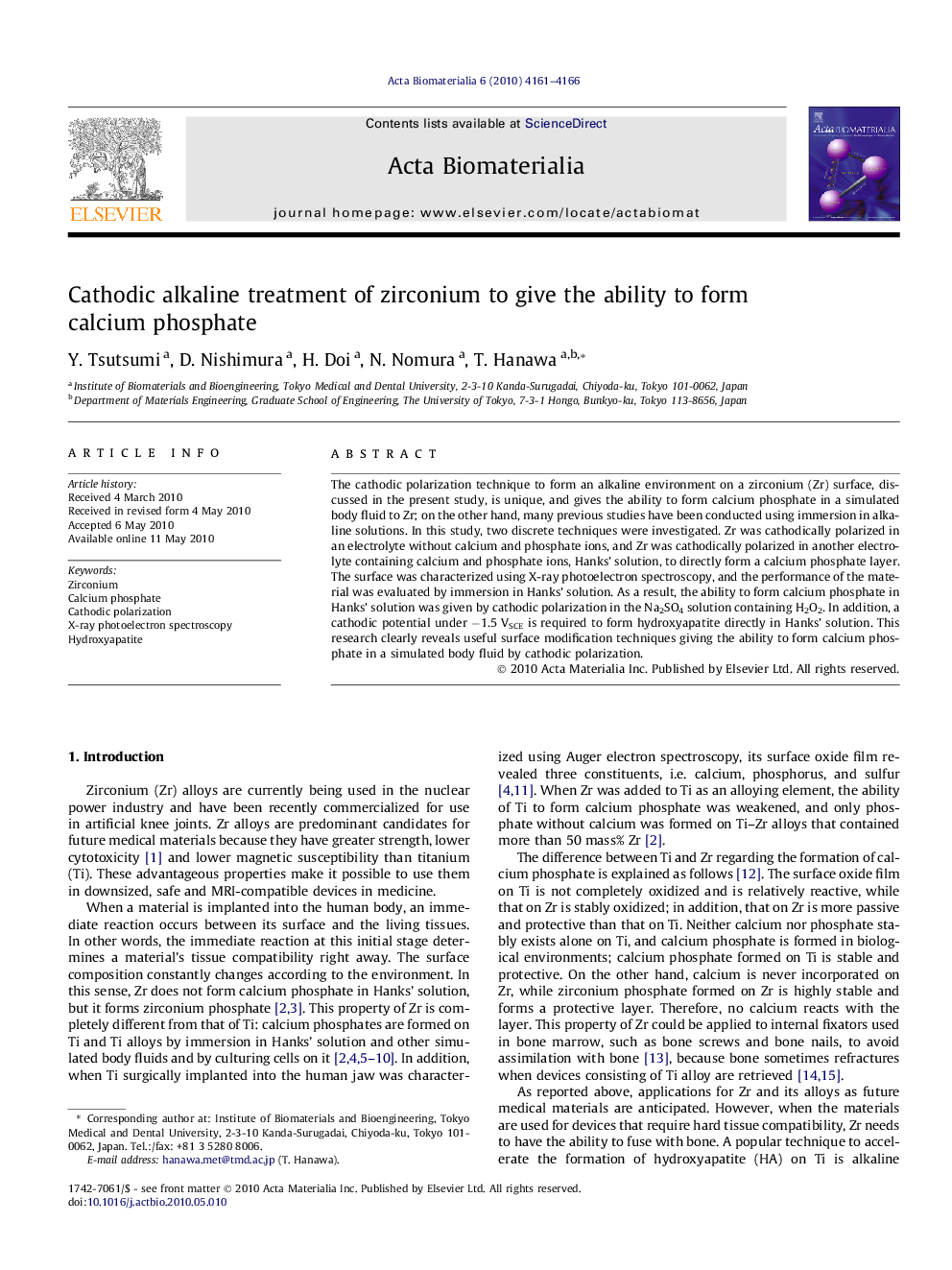| Article ID | Journal | Published Year | Pages | File Type |
|---|---|---|---|---|
| 1208 | Acta Biomaterialia | 2010 | 6 Pages |
The cathodic polarization technique to form an alkaline environment on a zirconium (Zr) surface, discussed in the present study, is unique, and gives the ability to form calcium phosphate in a simulated body fluid to Zr; on the other hand, many previous studies have been conducted using immersion in alkaline solutions. In this study, two discrete techniques were investigated. Zr was cathodically polarized in an electrolyte without calcium and phosphate ions, and Zr was cathodically polarized in another electrolyte containing calcium and phosphate ions, Hanks’ solution, to directly form a calcium phosphate layer. The surface was characterized using X-ray photoelectron spectroscopy, and the performance of the material was evaluated by immersion in Hanks’ solution. As a result, the ability to form calcium phosphate in Hanks’ solution was given by cathodic polarization in the Na2SO4 solution containing H2O2. In addition, a cathodic potential under −1.5 VSCE is required to form hydroxyapatite directly in Hanks’ solution. This research clearly reveals useful surface modification techniques giving the ability to form calcium phosphate in a simulated body fluid by cathodic polarization.
